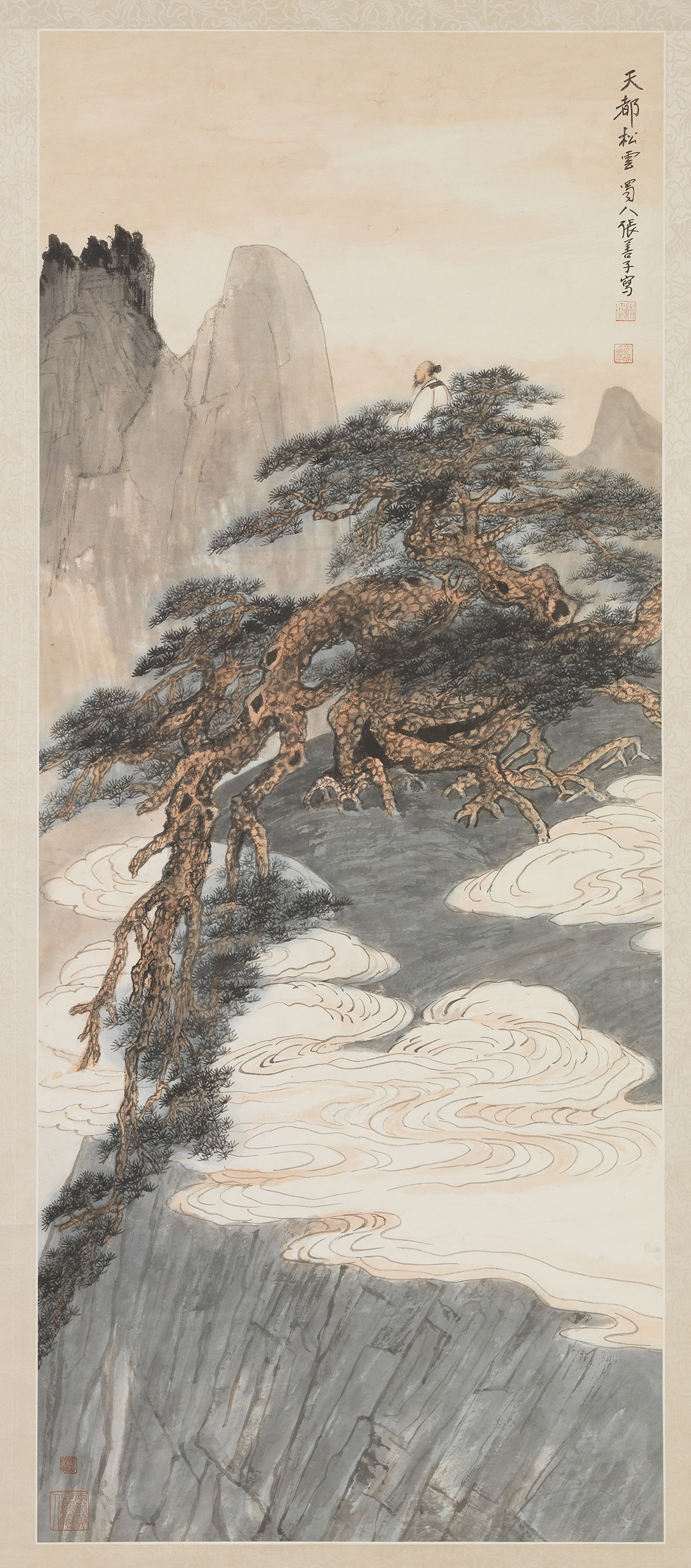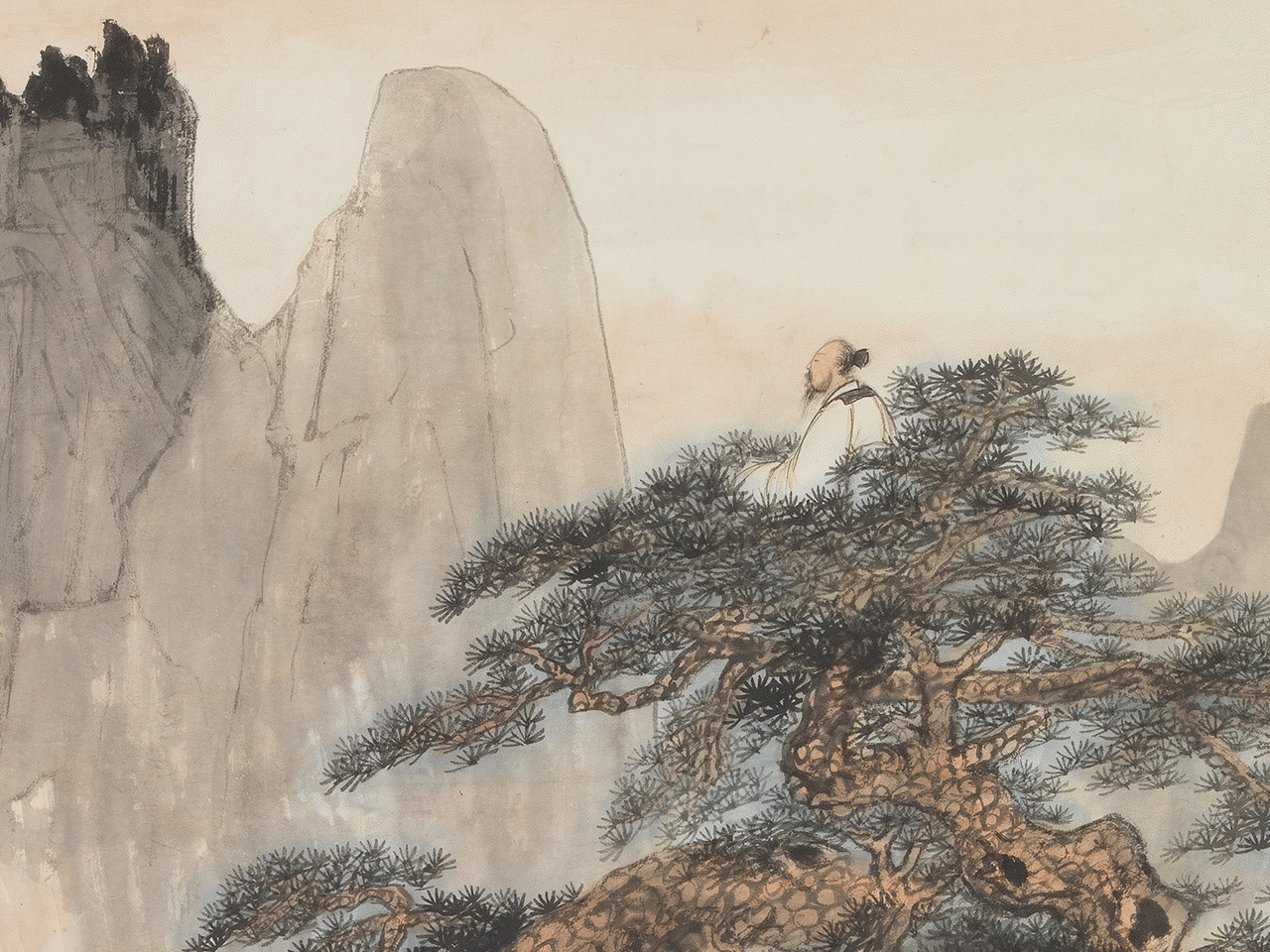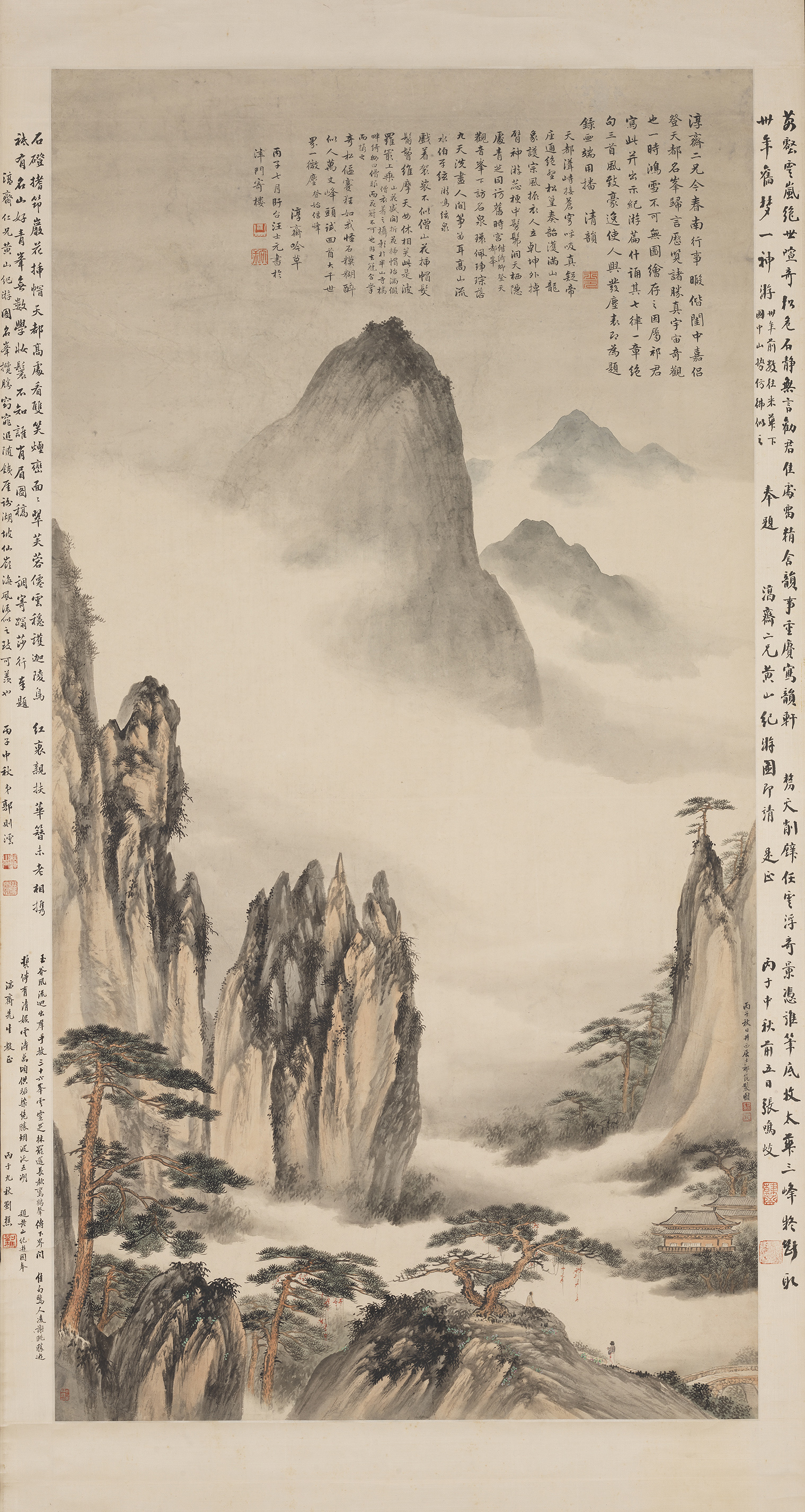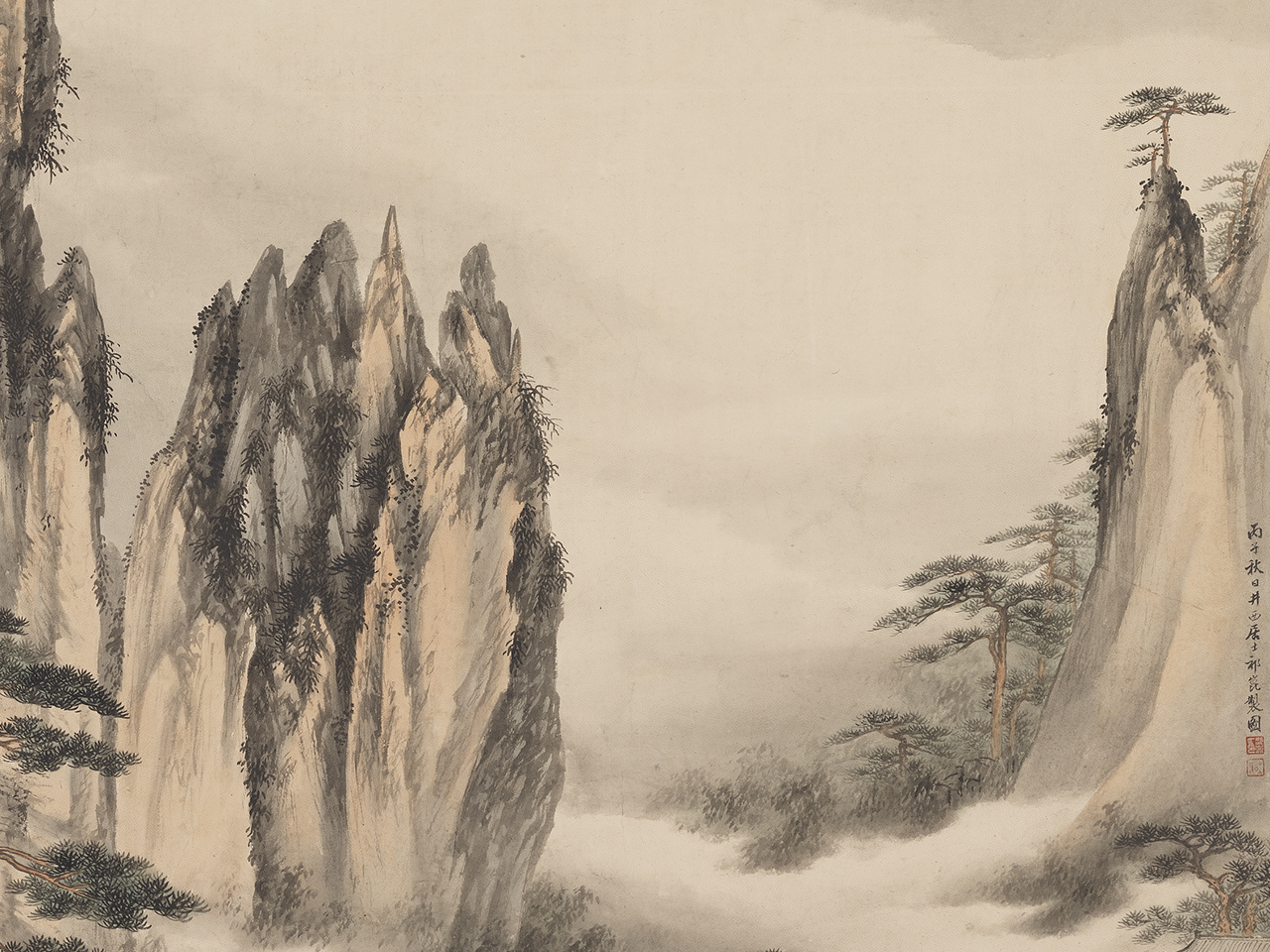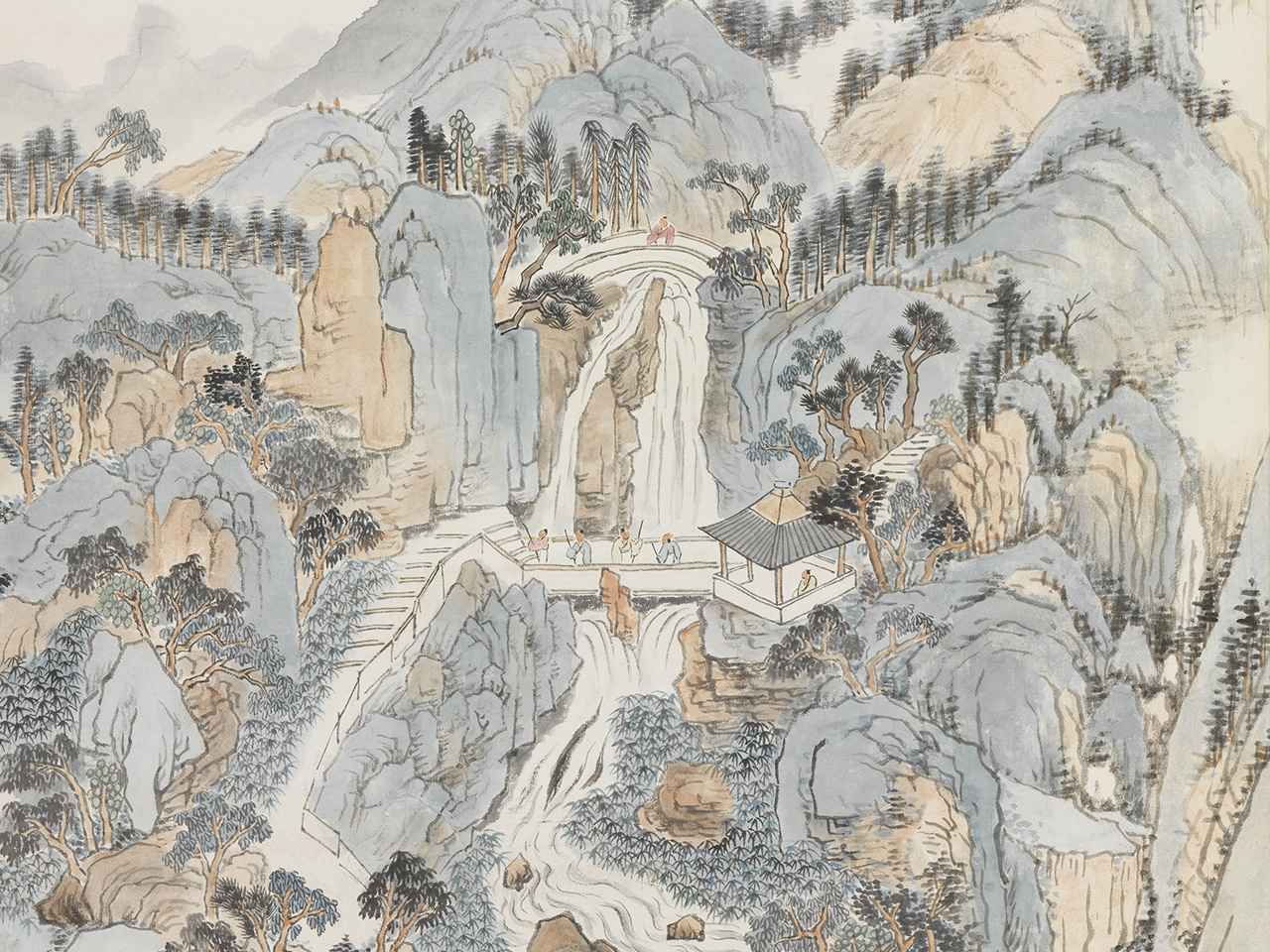Travel in the Modern Era
The arrival in the twentieth century of "outdoor sketching from life" as a new form of art education in China made this practice not only required training for Western-style painters but also considered a more scientific approach to verisimilitude among artists in general, making it a common practice. Chinese-style painters, who often worked in traditional subject matter, employed both photography to capture scenery viewed by the eye and the idea of "sketching from life in the methods of the ancients." In their observations of actual scenery, they sought the experience of generating brushwork by artists in ancient times. The importance attached to "sketching from life" was also related in part to government policies encouraging travel to scenic sites by taking advantage of rapid advances in railway and highway infrastructure systems. The government planned tourist routes and invited artists to create travelogues in poetry, prose, painting, and calligraphy. The results were works increasingly on such famous mountains as Huangshan and Yandang produced to record personal journeys there. Moreover, social turbulence after the founding of the Republic in 1912 and then the outbreak of the Second Sino-Japanese War (1937-1945) propelled artists to areas that had rarely been visited previously, introducing more scenic places to the world of painting.
-
Old Man on a Pine Tree
- Chang Shan-tzu (1882-1940), Republican period
- 123.2 x 50.9 cm
Chang Shan-tzu (named Ze but going by his style name) was a native of Neijiang in Sichuan. Excelling at the painting of tigers, he was the second eldest brother of the famous artist Chang Dai-chien (1899-1983).
This undated work depicts Tiandu ("Heavenly Citadel") Peak at Huangshan. Large swaths of the brush were used to render the cliffs that appear with patterned clouds, creating a novel approach. This image of an old man sitting on a pine tree brings to mind the scenic site of Putuan ("Rush Cushion") Pine at Huangshan. The twisting and contorted roots here, however, differ from that tree, suggesting the artist perhaps incorporated features from other pine trees at Huangshan. Early in 1927, Chang Shan-tzu and his brother Chang Dai-chien ascended Huangshan, when there was still no access route. They were thus one of the first in the early Republican period to explore the Huangshan area.
-
Sea of Clouds at Huangshan
- Qi Kun (1901-1944), Republican period
- 131.2 x 67.4 cm
Qi Kun (sobriquet Jingxi jushi), a native of Beijing, excelled at painting landscape forms using "axe-cut" texture strokes. He was active in Beijing and Tianjin painting circles.
In 1933, with the opening of Hanghui Highway, travel to the scenic areas at Huangshan became far more convenient. This work, done in 1936, records a trip to Huangshan by Xu Fubing (1882-1961), chairman of the Continental Bank in Tianjin. It depicts the scenery of Sanhuawu ("Flower Scattering Basin") at Beihai ("Northern Sea"). To the right is the "Dream Brush (Peak) Giving Rise to Flowers," on the left is "Brush Holder Peak," and in the distance is Shangsheng ("Rising") Peak, which are landmark features of the scenery there. The artist perhaps consulted photographs and made Shangsheng Peak taller and further away, which differs slightly from the actual geography of the area.
-
Gazing at a Waterfall
- Xia Jingguan (1875-1953), Republican period
- 103 x 47.7 cm
Xia Jingguan (style name Jiancheng, sobriquet Xue'an) was a native of Xinjian in Jiangxi and a poet, painter, and calligrapher of renown in the modern era.
This painting done in 1940 depicts Mogan Waterfall in the district of Deqing County, Zhejiang Province. According to legend, this site is said to have been the place where Ganjiang and Moye forged a pair of swords for the ruler of Wu in the Spring and Autumn period (770-476 BCE). It was, in fact, not until 1926 that the waterfall was designated as such by the Zhejiang literatus Zhou Qingyun (1866-1934) from Nanxun, who came to this conclusion based on his interpretation of old gazetteers and the geography; he also wrote Gazetteer of Mount Mogan. Nowadays, the appearance of this scenic area is thus mostly the result of Zhou Qingyun's efforts and represents a new addition to "ancient sites" in the early Republican period.
